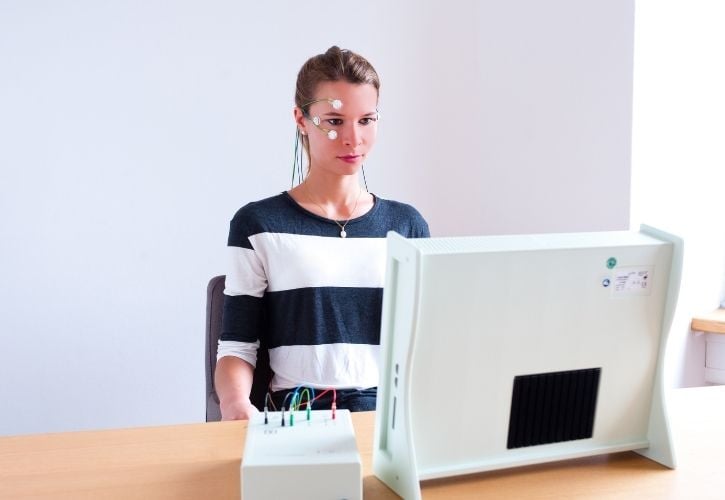Anxiety disorders
Anxiety can arise from various factors, prompting the need for a personalized and individualized approach to effectively tackle its root cause. Treatment options encompass health coaching, psychotherapy, and sleep training, offering a comprehensive range of solutions.

Straight to:
Anxiety is a normal biological reaction to a stressful situation. We will all go through periods where we feel anxious, worried or stressed. However, if these feelings don't dissipate or begin to interfere with daily activities, it may be an indicator of an underlying anxiety disorder.
While at times it can feel like our Anxiety responses are out of our control the good news is that with dedicated support and intervention people can learn to manage their anxiety and lead happy, fulfilling lives.
Causes of Anxiety
Anxiety is a normal biological reaction to a stressful situation. It’s initiated by our nervous system to keep the body on high alert in case of danger. It is usually short-lived and associated with feelings of worry, apprehension and physical discomfort.
Unfortunately, our brains can’t always tell the difference between real danger and modern-day stressors.
Anxiety becomes a problem when certain brain areas function inappropriately, setting off a stream of ‘stress response’ behaviours which can result in symptoms of anxiety for seemingly no reason.

When Anxiety becomes unmanagable
Our ability to deal with normal levels of anxiety effectively depends on our autonomic nervous system (ANS). The ANS is made up of two parts: our sympathetic nervous system (responsible for the body’s "fight or flight" emergency response) and our parasympathetic nervous system (which allows you to calm down.)
If we are persistently stressed, our fight or flight response is consistently activated and it becomes harder for the parasympathetic nervous system to balance the reaction. This can lead to physical problems including trouble breathing, cardiac distress, and erectile dysfunction.
What are Symptoms of Anxiety?
Nearly 17% of Australians are diagnosed with anxiety disorders each year. Some common symptoms to look out for include:
Treating Anxiety
Psychotherapy
Various forms of psychotherapy, such as cognitive-behavioural therapy (CBT), acceptance and commitment therapy (ACT), and mindfulness-based techniques, have been extensively researched and proven effective in treating anxiety disorders. These therapies help individuals overcome negative thought patterns and behaviors, accept their anxious thoughts and emotions, and cultivate present-moment awareness. By addressing the underlying causes of anxiety and equipping individuals with effective coping strategies, psychotherapy offers lasting relief and promotes mental health and inner calmness.
Learn more about Psychotherapy
Health Coaching
Health Coaching appraches anxiety treatment with a balance of short-term management and long-term growth.
In the immediate term, your coach will teach you techniques for managing your stress responses as well as working with you to identify what’s causing you anxiety in the first place. Over the long term, you and your coach will build your mental and emotional capacity and work towards personally meaningful longer-term outcomes. They can help you move past barriers and build a vision for the best pathway forward.
Learn more about Health Coaching
Neurofeedback to help Sleep
In some cases, negative, unmanageable symptoms of anxiety may be caused or exacerbated by sleep issues.
neurocare can perform a comprehensive Actigraphy assessment to identify if this is a contributing factor. If sleep is found to be a concern you may benefit from Neurofeedback for sleep disorders. This is a non-invasive, evidence-based treatment that uses real time feedback to encourage the bran to develop healthier patterns of activity.
By training your brain to better shift between varying states of focus and relaxation you are able to improve your ability to wind down, fall asleep and stay asleep.
Types of Anxiety Disorders
-
A panic attack is a state of intense anxiety that often occurs unpredictably and without a specific trigger. The anxiety reaches its peak within 10 minutes, sometimes with fear of death, and then may dissipate. Panic attacks often come with various physical symptoms, such as chest pain, suffocation and shortness of breath, dizziness and feelings of alienation. Many people experience at least one panic attack in their lives and about 2-4% of the population develop a panic disorder. This is a condition in which the person is constantly fearful of a new panic attack.
Cognitive Behavioural Therapy (CBT) facilitated by a qualified Psychologist has been shown to greatly help people with panic disorders. In CBT, the person learns to face their fears in a protected setting and to behave contrary to the phobia using specific strategies and tricks with the aim of normalising their fear reaction.
Panic attacks can also occur as part of a depressive disorder. In this case, it is generally advised that symptoms of depression should be first addressed. -
Agoraphobia is characterized by the fear of situations or places from which it is difficult to escape or where help is difficult to obtain.
Because the fear reaction is exaggerated this can increase the risk of an associated panic attack, and those affected tend to avoid situations and places that are associated with this fear. This can greatly restrict a sufferers interactions including their ability to work, social relationships and everyday activities such as shopping for groceries or using public transport.
-
People with a social phobia fear situations in which they are potentially the focus of attention and where they might embarrass themselves. For these people, there is a constant and sometimes debilitating perception of being negatively evaluated by other people in their environment.
Social anxiety is usually accompanied by physical symptoms such as blushing, trembling, soft knees, shaky voice or increased bowel movements. These symptoms often exacerbate the feeling and increase the fear of embarrassment. Constant avoidance of these situations can lead to tremendous social, school, study or work restrictions, resulting in a feeling of isolation.
-
This form of anxiety is usually limited to narrowly defined situations.
A person with one of these specific phobias usually feels some sort of physical reaction, such as trembling, hot flushes, weak knees, shortness of breath.
As with other anxiety disorders, repeated exposure therapy as part of Cognitive Behavioural Therapy can be beneficial. -
Generalized Anxiety Disorder (GAD) applies to people who have a constant feeling of anxiety and worry towards a wide range of everyday tasks. An example of this would be someone who feels persistent worry that they or someone close to them will suffer an acute illness or accident. This often manifests itself as an endless chain of negative emotion and stress.
People with Generalized Anxiety Disorder may rely on excessive reinsurance behaviours, such as relying on friends, family members or medical professionals to reassure them of their safety and remind them they are not experiencing a perceived threat or illness.
GAD usually results in physical reactions such as nervousness, muscle tension, tremor, drowsiness, palpitations, dizziness or abdominal pain.
Not sure if our services are right for you?




